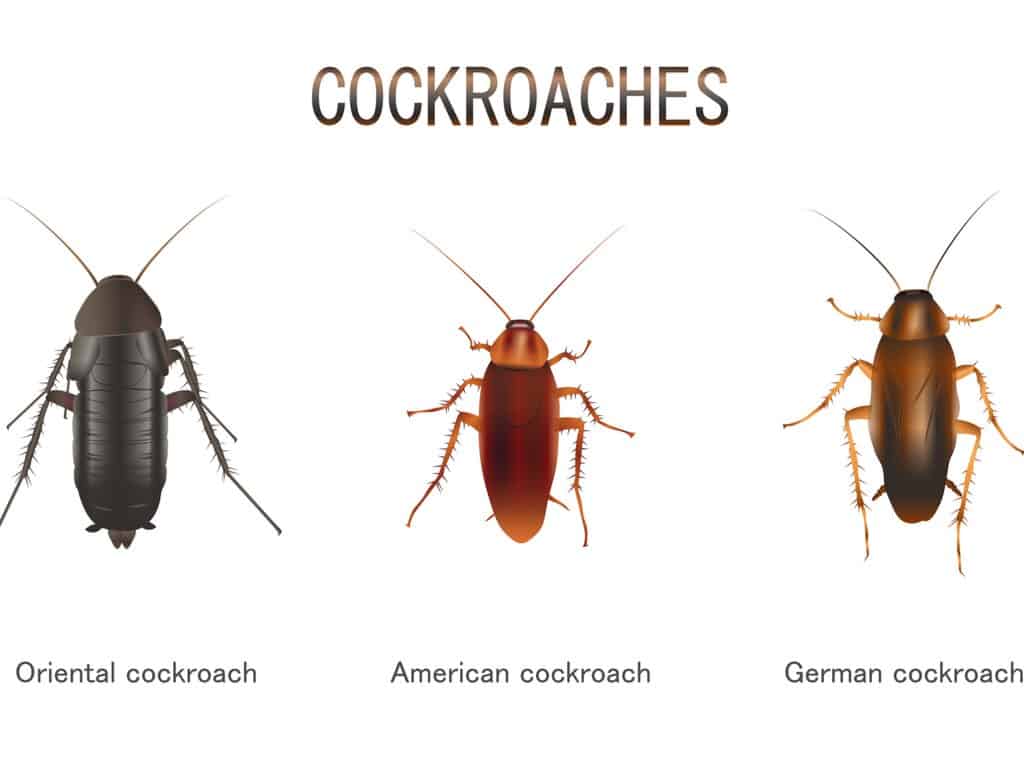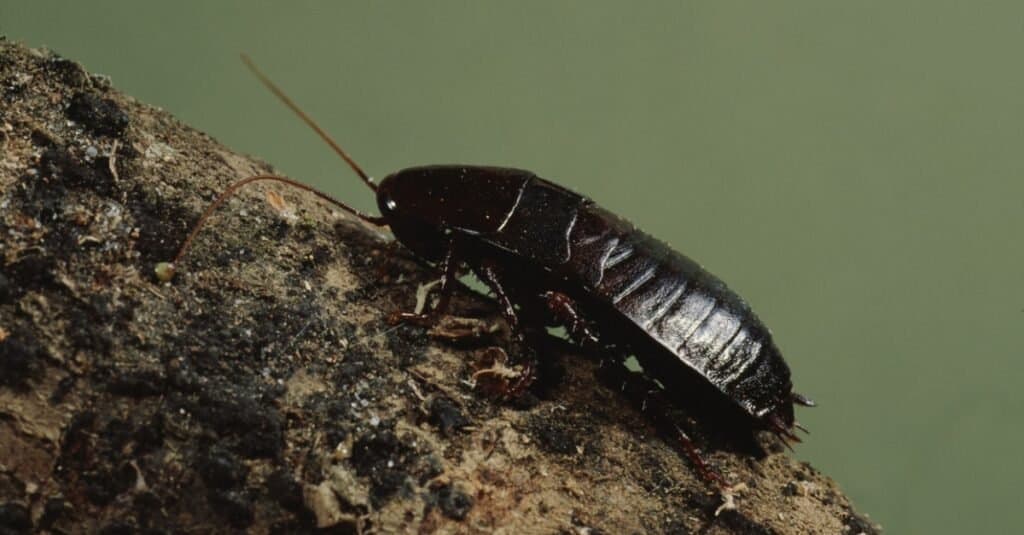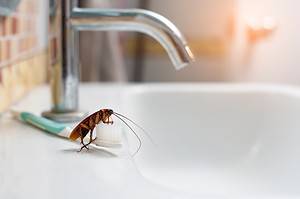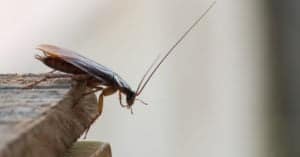Cockroaches can go months without food, wedge themselves into cracks smaller than their own bodies, and famously survive atomic blasts. They’re members of the ancient Blattodea order of insects; they’ve been around for over 300 million years. Unlike other bugs, they’ve maintained very simple body parts and chewing apparatus’. It’s this generalization that enables them to survive, and thrive in so many places around the globe. Most cockroaches are deep to reddish-brown, but there’s one common household species of black cockroach.
Here, we’ll discover more about the exact species of the black cockroach. We’ll learn how to identify this species, and go over whether or not they’re dangerous. Let’s take dive deep.
What Kind of Cockroach Is Black?
There are many species of black cockroaches, but most of these species never come into contact with humans. Out of the over 4,500 cockroach species around the world, only one is black and known to live among humans. This is the oriental cockroach (Blatta orientalis).
Oriental roaches are often called water bugs because they favor damp conditions like improperly ventilated basements and sewers. They’re almost always found either at ground level or below ground— you won’t often find an oriental cockroach on the 37th floor. Unlike other roaches, these black cockroaches can survive the cold.
How To Identify Oriental Cockroaches

Black cockroaches are almost always oriental cockroaches
©pablofdezr/Shutterstock.com
Oriental cockroaches look much the same as any other cockroach species, but they’re much darker than any other common household roach. They can grow up to 1 ¼ inches long, with the males being slightly bigger than the females. Males have functional wings which they use to glide, while females have only rudimentary, non-functioning wings. Nymphs (baby cockroaches) aren’t as dark as adults, and they have no wings at all.
These roaches are considered by many to be the dirtiest, and foulest smelling, of all urban cockroaches. They favor basements and can move from house to house via sewer lines. One female can produce up to eight egg cases in her life—each egg case contains around 16 eggs.

Oriental cockroach eggs are larger than many other species and brown.
©acarapi/Shutterstock.com
What Do Black Cockroaches Eat?
Black roaches, or, oriental cockroaches, feast on all kinds of waste. They have a particular love for garbage and fecal matter; either human or animal. They also eat food waste, and won’t say no to things like corrugated cardboard and the starch of bookbindings. Shed skin cells and other detritus make a welcome meal too.
Are Black Cockroaches Poisonous?
You might see a black cockroach on the street or in your home and wonder: is it poisonous? Here’s the good news: cockroaches are not poisonous. They’re not venomous, like snakes, either. Roaches come with a different array of defenses against predators: bad smells and disease. You should never touch a wild cockroach; they’re capable of carrying many diseases, and illness from cockroaches can cause food poisoning-like symptoms. Additionally, cockroach ‘dander’ can cause asthma and breathing problems, particularly in young children and elderly people.
Where Do Black Cockroaches Come From?

Oriental cockroaches originated in western Asia and are an invasive species in the United States.
©iStock.com/Weber
Oriental cockroaches are thought to have originated near the Black and Caspian Seas in western Asia. Today, they’re one of the four most common pest species of cockroach in the United States. Black cockroaches can be found outdoors as well as indoors. Because they like water, they can often be sighted near wells, water valves, sources of water, and under moist piles of vegetation. Indoors, they tend to move slowly and stay out of the light.
Why Are There Black Cockroaches in the House?
If there’s a way in, a source of food, and a place to hide, roaches will make themselves at home. Oriental cockroaches are no exception. If you find a black cockroach in your home, chances are likely that something attracted it. Roaches are attracted to food waste, cluttered areas, spills, feces, and any other type of waste. But, having roaches doesn’t necessarily mean you have a dirty home; you may just have a home in a suitable location for cockroaches, like the end of a sewer line.
How to Get Rid of Black Cockroaches
Oriental cockroaches can take up residence in both homes and businesses. If you suspect an infestation, your next step is to either call a professional pest exterminator or attempt to take care of the problem on your own. If you decide to personally eliminate the roaches, you may want to start with bait and traps. Traps enable you to determine where the roach problem is the worst, and exactly what kind of cockroach you’re dealing with. Next, you’ll want to choose a pesticide, like boric acid. No matter what method you choose, ensure that you do proper research, as many pesticides can be harmful to humans and pets.
Black Bugs That Are Not Cockroaches
Not all crawling, black bugs are cockroaches. There are many insects that look similar to the oriental cockroach. These include, primarily, water bugs and beetles. Water bugs are easily distinguishable from cockroaches by their large pincers. Whereas beetles lack the extra-long antennae and spiked legs of roaches. Oriental cockroaches can be distinguished from other species of cockroach, first, by their dark color. Further, they’re slower than other cockroaches and are more likely to be found in moist settings than are other species.
The photo featured at the top of this post is © iStock.com/Weber
Thank you for reading! Have some feedback for us? Contact the AZ Animals editorial team.






